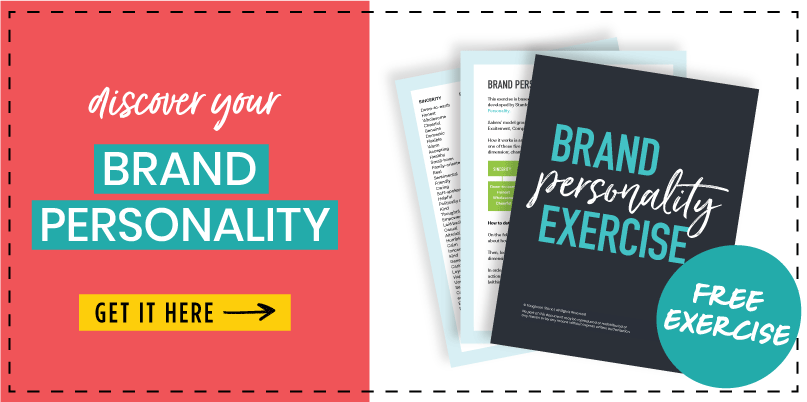If you’re looking to attract more customers to your business, the first imperative is to make your brand message clear, relevant, and focused.
Put yourself in the shoes of your dream customers. They’re busy. Distracted. Overwhelmed. Bombarded with thousands of messages every day. If you want them to understand what you do and why they should care you have to make it easy for them to ‘get it’ instantly.
And yet, unclear, overly-clever, wishy-washy and complicated brand messages are everywhere — and AI is only adding to the noise.
This is a huge challenge for business owners — especially solopreneurs — because we’re expected to boil down everything we do and everything we are and stand for into a catchphrase or a 5-6 word tagline.
I don’t know about you, but this type of exercise is enough to hurl me into an existential crisis — Who am I? What’s it all for?
Forced cleverness doesn’t help people understand that you’re the one who can help them solve their problems so let’s make this easy.
Here’s a simple framework you can use to clarify your brand message…
The 5 Components Of A Crystal Clear Brand Message
#1 What problem do you solve?
It all starts here guys. If you’re not crystal clear about the problem you solve for people — if you’re throwing all the things you’re capable of doing on your website and expecting people to make sense of that, or you’ve written a manifesto on your home page — you’re making it hard for the right people to find and then hire you or buy your products.
If you’re spending a lot of time on social media, building your email list, or fussing with clever copy for your website but your customer is thinking, “What is it you do, exactly?” … your marketing efforts are going to amount to a whole lot of wasted effort.
Get clear on this first and then market your business with the intention of communicating it consistently. Make this one change and you’ll begin to see traction.
This is your niche.
#2 Who is it for?
I’m going in the correct order here. First, you figure out the problem you solve — What are your strengths? Where is your zone of genius? What is the work you’re meant to be doing? What painful problem can you solve for people? What work do you want to become KNOWN for? — and then you figure out who you want to solve it for.
If you’ve already chosen a specific market segment to target, but you haven’t figured out the painful problem you’re going to solve for them, they’ll understand what you’re selling is for them but they’re not going to understand they need it.
Use this simple formula: “I help [target audience] [achieve this transformation] by [your solution].”
Stick that in all your social media bios, your email signature, and everywhere you can — it will be far more effective than a clever tagline that doesn’t get to the heart of what you can do to help your dream customers live their best lives.
#3 In what ways is the experience of being your customer different?
This is your brand positioning.
What makes you the best choice out of all the options they’re considering?
What are the specific benefits? How is your approach, philosophy, or process different?
You want to make your points of difference crystal clear too, otherwise, they’ll make a decision based on price and I’m going to assume that’s not what you want.
Use this simple value proposition formula: “I’m the one that __________.”
#4 What are you like?
This is your brand personality.
People work with people they know, like, and trust. So how can you give complete internet strangers a sense of what that experience is going to be like?
You do it by choosing your words and the way you use them carefully. Your tone of voice in your writing and in your marketing content should give them a glimpse of what you’re like as a person.
If you’re whimsical, quirky or nerdy, don’t be afraid to express that in your words and brand visuals. If you’re no-nonsense, serious, and reliable — same. The important thing here is for your marketing messages to be in alignment with what the actual experience is really like.
And if you’re struggling with this at all… ask your past clients or customers what that experience is like. Then, use those words to inform your brand message.

#5 Why are you doing this?
“People don’t buy what you do, they buy why you do it.”
—Simon Sinek
Your “why” isn’t necessarily something you have to put in your tagline, but it’s something you should figure out so you have an overall brand purpose to ground you.
In my work as a brand strategist, creating a purpose statement was one of the first exercises I used to do with my clients. It probably feels a bit out of left field at first — “Why is this lady making me answer all these woo-woo questions?” — but a magical thing happens when people get clear about this…
Everything makes sense.
You have a compass to guide you to where you really want to take your business – your bigger reason, purpose, mission – and brand messages are easier to create because you know exactly why you’re creating the message in the first place.
And this is why people will connect with you too… they’ll sign up with you because you’re the one who is here to help them better understand who they are (as it relates to your brand).
Here are some questions to ask yourself to help you figure it out:
Why did you get into this business in the first place?
What did you see that you wanted to change? What need did you see in the marketplace that you wanted to meet?
How can your company make a difference for your customers?
What is the problem that you want your business to solve? How will your business make things better?
How do you feel about your customers?
Does it matter to you how your service makes your customers feel? What aspect of your relationship with your customers brings you joy?
What’s your impact?
What is the impact you’re making on people’s day-to-day lives?
What change do you and your customers want to see in the world?
Does your brand take a stand on such real-life issues as animal testing, climate change, bullying, gay marriage, gun control, equal pay or some other cause? How will your business make things better?
Are you a game-changer in your industry?
Is there an issue such as quality, pricing, or efficiency that disrupts the status quo of your industry?
TLDR;
An effective brand message is one that’s clear about the problem you solve, who you solve it for, the ways working with you is different than the alternative options and what that experience will be like, and the big reason why you’re the one for them.
And if you need help getting clarity around this? We’ve got just the thing. I’ve taken my experience as a brand strategist and turned it into an Ai-powered process to help you take your fuzzy thoughts about your brand and turn it into a practical tool you can use when creating content for your business — whether writing from scratch, handing off to your team, or using Ai tools.
Click on the image below to see what’s inside BrandHQ.



These questions can surely provide clarity to your brand and help to establish your brand its respective niche. Great article. Thanks for sharing.
Great guide Taughnee, It is the art of using the right words to convey the essence and value of your brand to potential customers.